Best practices for walking with ankle weights
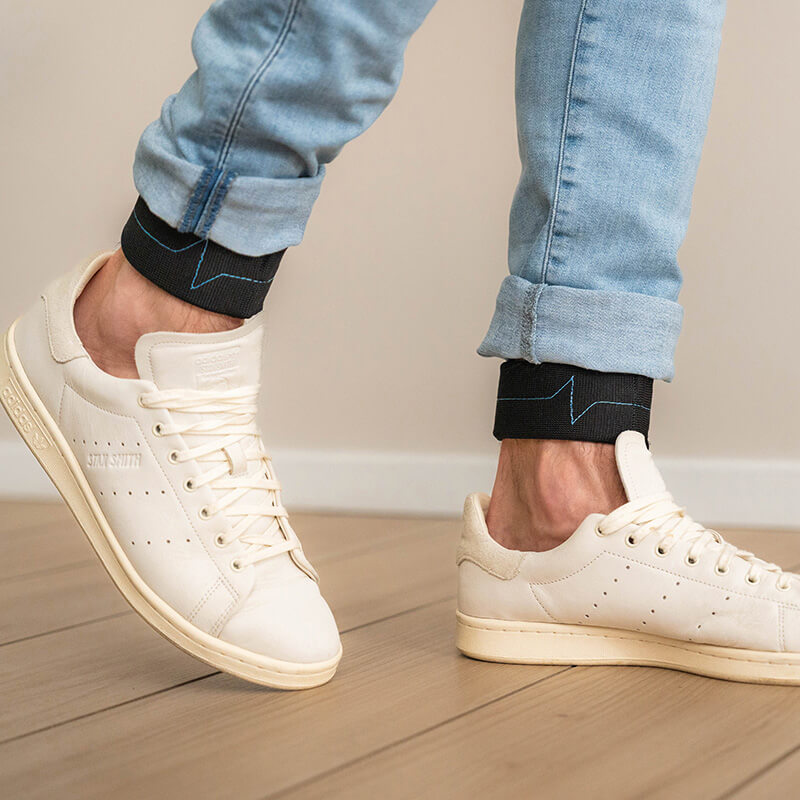
Is walking with ankle weights a good idea? Yes... provided you keep it light and follow a few simple rules.
This practical guide reviews the benefits, risks to avoid, weight selection, and practical usage tips depending on your goal.
The benefits of walking with ankle weights.
Gentle and regular muscle activation:
The muscles in the legs, hips and lower back are engaged by the slight resistance at the ankles. Each step becomes a gentle, integrated workout that is gentle on the body: the effort is intensified without altering the stride, which maintains strength and tone.
Improved balance and coordination:
With a slight weight, walking becomes a gentle muscle exercise: it can improve motor control, stabilise your stride and promote better alignment. These adaptations — useful during your exercises and in everyday life — reinforce the feeling of safety with every step.
Stimulation of metabolism:
With age, metabolism tends to slow down, particularly with the decrease in muscle mass. Regularly wearing light weights helps to preserve muscle mass and increases energy expenditure with every step, allowing you to burn more calories on a daily basis. The cumulative effect — subtle but constant — builds up over time.
Helps maintain bone strength:
Weight-bearing activities, such as weighted walking, help stimulate bone density. This regular mechanical stimulation can play a role in preventing osteoporosis, especially when combined with a healthy diet.
Cardiovascular support:
Wearing light weights on your ankles makes your cardiorespiratory system work a little harder with each movement, which gradually helps to strengthen your heart and blood circulation. By gently and regularly working your leg muscles, this practice helps to maintain your overall physical condition. However, if you have high blood pressure or heart problems, it is best to monitor your blood pressure and seek advice from a healthcare professional.
Practical, simple and accessible:
No specific weight training sessions are required: simply incorporate weights into your daily routine to get more exercise: walk a little more, do small functional exercises (getting up from a chair, climbing stairs, moving around), and gradually increase your activity in a gentle and sustainable way.
What are the risks and precautions to take?
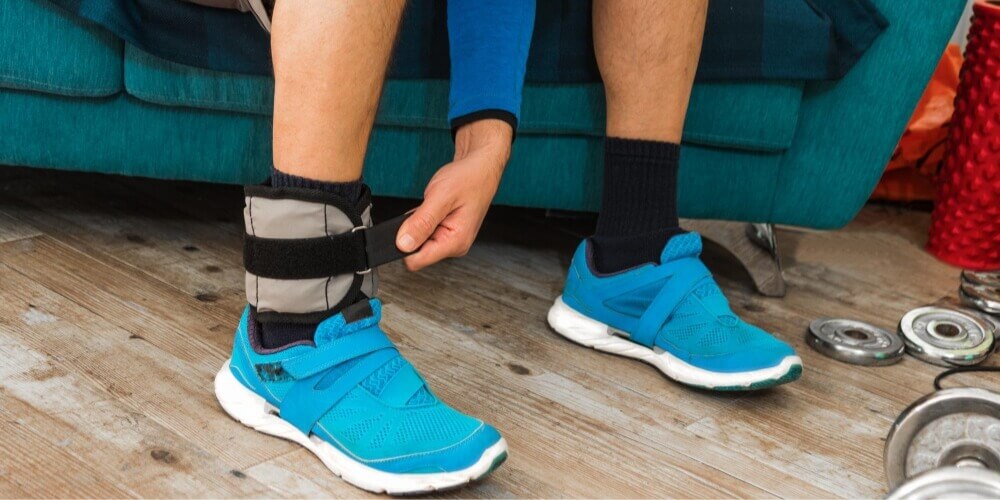
If you feel the weight (you can clearly feel it with every step) or it affects your stride, reduce the weight or remove the bracelet.
Avoid compensating (shortening your stride, putting too much weight on your feet, rotating your hips/pelvis, turning your toes outwards, leaning your chest forward): as soon as your movement becomes unnatural, you are no longer in the imperceptible zone.
It is important to listen to your body and the signals it sends you, such as pain or leg fatigue, in order to limit the risk of injury.
Choose lighter weight training accessories and adjust the tightness for even distribution; ergonomic bracelets with a light load make it easier to wear without feeling any effort.
Prolonged wear, safety and the "imperceptibility principle".
When walking continuously with ankle weights, the determining factor is not the duration itself, but your perception.
Principle of imperceptibility: if you are aware that you are wearing a bracelet, the load is too heavy. The right benchmark: no discomfort, no change in stride, no unpleasant sensations.
Daily wear: when used correctly (imperceptible load, without altering movement), they aim to optimise the benefits of ordinary walking.
What increases the risk: heavy ankle weights, worn continuously and noticeably, distort movement (swaying, uneven support), which can increase discomfort or strain on the joints.
30-second self-test:
Walk at your usual pace. Ask yourself:
"Can I feel them? Is my stride changing?"
- If yes: lighten the load or remove them for a moment.
- If no: you are in the right zone.
Tips for choosing and using ankle weights.
There are two approaches to wearing ankle weights, each with its own characteristics. Either wear them occasionally to enhance your exercises, or wear them continuously to increase your physical activity.
If your goal is to walk with ankle weights and optimise the effect of your steps, then choose continuous wear.
Occasional wear to enhance an exercise:
Objective: to create a targeted stimulus for greater muscle strengthening. During your strength training exercises or a gym session, wear ankle weights that are deliberately noticeable but controlled.
- Suitable weights: 0.5 kg to 5 kg per ankle depending on your level, ensuring that your movements remain fluid and stable.
- Short durations: 10-30 repetitions per exercise, 3-10 sets, with breaks between each set to avoid excessive fatigue.
- Controlled movement: natural range of motion, no compensation (hip rotation, leaning chest).
The priority remains the quality of the movement, not the quantity. As soon as the exercises become too complicated and your movements become distorted, reduce the weight or take a break.
Continuous wear to increase physical activity:
Objective: to increase daily physical activity without conscious effort — focus on consistency and natural movement.
- Light weights that are imperceptible: 500 g to 1 kg maximum per ankle.
- Unchanged movement: no change in stride, pace or posture. If the weight on your ankle becomes noticeable, take a break.
Effectiveness is based on the cumulative duration throughout the day, not on intensity.
Examples of exercises and suitable routines.
Continuous wear with light weights - 500g to 1kg:
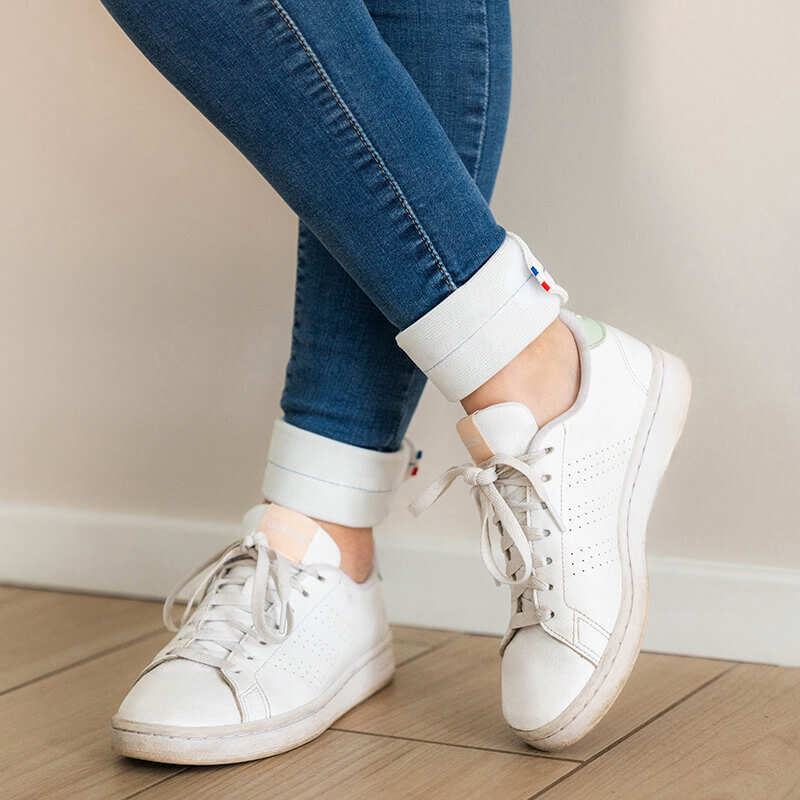
No specific exercises are required: simply wear them on your ankles and continue your usual activities (walking, household chores, travelling). Each step gently and constantly stimulates your leg muscles, providing micro-exercises throughout the day.
- Key tip: if you start to feel them or change your stride, take a break.
- When to use them: for exercising at the office, when working from home, during your daily commute, or as a complement to gentle activities.
Occasional use with heavier weights - 500g to 5kg:
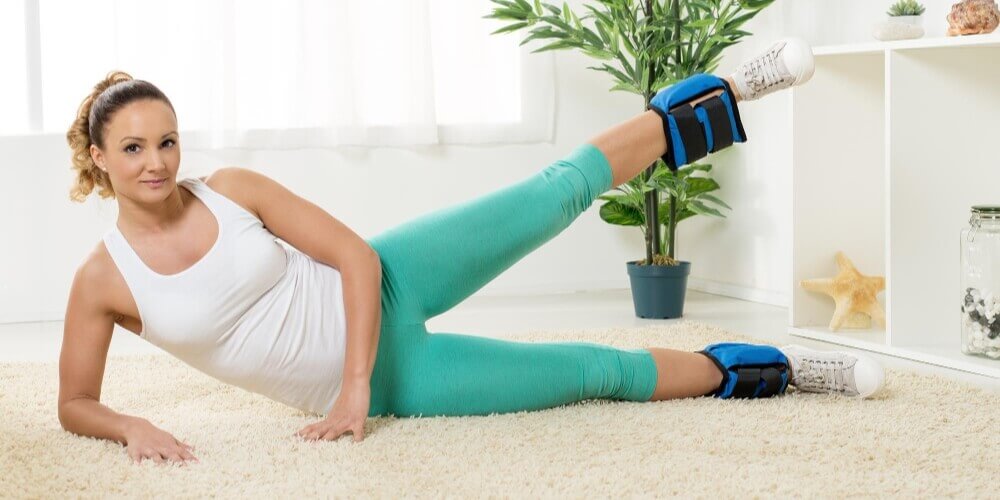
Ideal for gentle gym sessions such as Pilates, yoga or other practices where movement control is key.
Here are some examples of effective exercises:
- Hip abduction, extension and flexion
- Knee extension
- Dynamic core training
- Specific movements depending on your discipline
The key is to maintain fluid and precise execution. If you feel that you are compensating (changed posture, uneven support) or that the load is becoming too heavy, reduce the weight of the bracelets to maintain the quality of the movement.
Who is recommended to walk with ankle weights?
Sedentary people:
For office work or a sedentary lifestyle, wearing light ankle weights helps to compensate for inactivity. Each step stimulates the legs and lower back more.
Seniors:
Often lacking in movement, an appropriate weight promotes muscle maintenance and mobility without excessive effort. Just moving or walking will allow you to do small exercises on a regular basis.
Rehabilitation or medical conditions:
It's no secret that to get better, you need to move and strengthen your body. Wearing light weights continuously promotes gentle, gradual and regular strengthening.
People concerned about their well-being:
Even if you don't have any particular health issues, walking with weights on your legs slightly increases your daily muscle activity. This extra work has benefits for your vitality, tone and energy expenditure.
Common mistakes to avoid when walking with weights.
- Choosing ankle weights that are too heavy from the start.
- Trying to ‘feel’ the work all the time.
- Continuously carrying a noticeable load.
- Ignoring your body's signals.
- Increasing the weight before the duration.
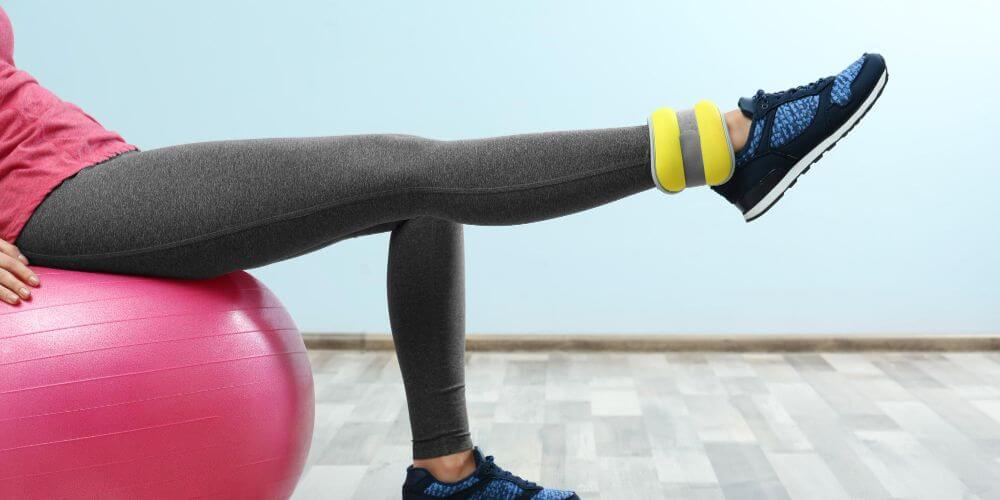
Frequently asked questions.
What are the benefits of walking with ankle weights?
Walking with ankle weights increases physical activity and energy expenditure, while offering simple, natural and regular use on a daily basis.
Can you walk all day with ankle weights?
Yes, if the load is appropriate, you can walk continuously with your weights. The weight should remain imperceptible and not alter your stride.
What weight should you start with when walking with weighted bracelets?
To start walking with weighted bracelets, the ideal weight is 500 grams for your legs. Walking and moving without feeling them is essential for wearing them safely.
Is it risky for the joints to carry a weight continuously?
No, if the weight is appropriate. However, a noticeable weight that alters your stride or natural posture can cause compensation and weaken the joints.
Conclusion.
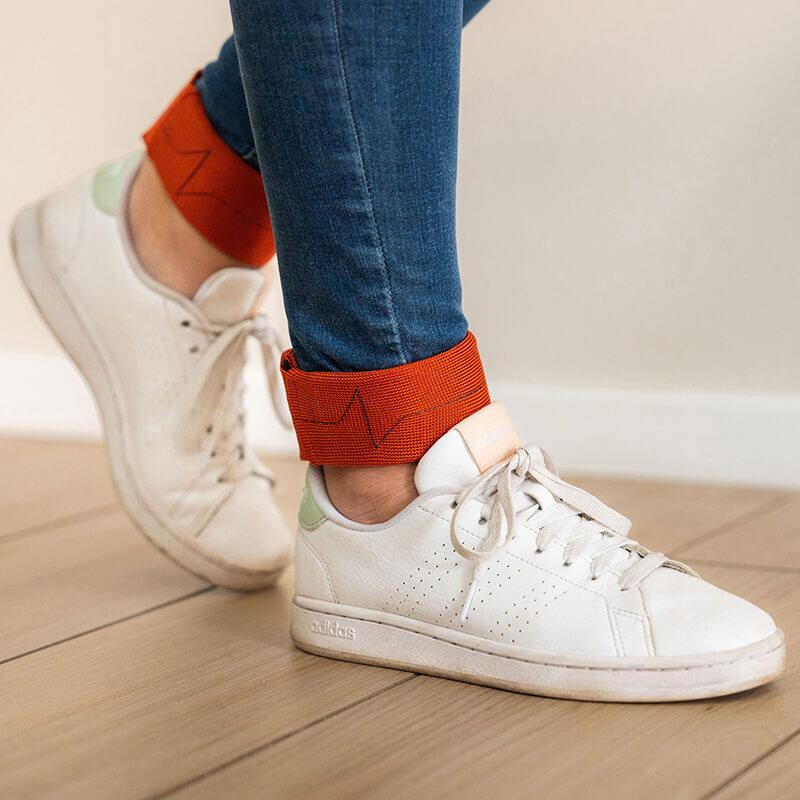
Walking with ankle weights is beneficial if the load and duration are adapted to the desired objective. For everyday use, imperceptibility remains essential in order to preserve fluidity and natural movement.
To get started, WEITNA® ankle weights offer the ideal balance: 500 grams per ankle, ergonomic design and premium comfort. Their discreetness allows you to increase physical activity without conscious effort, while maintaining impeccable movement quality.

Designed by a physio
Tested and perfected for your well-being

5-year warranty
A long-term investment

Monthly payment
Try first, pay later

Made in France
Patented in Europe, Sold worldwide

30 days free
100% satisfied or your money back





Share this content